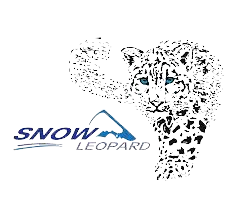Who we are & what we want to achieve
The Global Snow Leopard and Ecosystem Protection Program (GSLEP) seeks to address high-mountain development issues using the conservation of the charismatic and endangered snow leopard as a flagship.
About us
This iconic and culturally treasured great cat is a good indicator species as it quickly reacts to habitat disturbance and its successful conservation requires sustainable long term systemic solutions to the threats impacting the quality of habitats.
The GSLEP is a range-wide effort that unites range country governments, non governmental and intergovernmental organizations, local communities, and the private sector around a shared vision to conserve snow leopards and their valuable high-mountain ecosystems.
In 2013, in Bishkek, with the participation of 12 snow leopard range countries, a comprehensive Global Snow Leopard and Ecosystem Protection Program (GSLEP program) was endorsed — becoming a powerful platform and alliance uniting all countries, the scientific community, and local communities!
This GSLEP program has been steadily implemented for more than 11 years thanks to a solid foundation of political will from all range countries, implemented through a Ministerial-level Steering Committee.
Over the past decade, GSLEP has facilitated transboundary collaboration, strengthened conservation efforts, and promoted sustainable development in snow leopard landscapes. The program has also supported scientific research, capacity building, and community engagement, recognizing that long-term conservation success depends on the active involvement of local populations.
Looking ahead, the GSLEP alliance remains committed to ensuring the survival of this iconic species and the preservation of its fragile mountain ecosystems. With continued cooperation, innovation, and determination, the GSLEP partners strive to secure a future where snow leopards thrive in harmony with people and nature across their entire range.
Our mission
The snow leopard range countries and partners unanimously agree, with support from interested organizations, to work together to first identify and secure at least 20 snow leopard landscapes across the cat’s range by 2020, and subsequently continue as a platform for long-term coordination of activities towards conserving snow leopards and its habitat.
The snow leopard range countries and partners unanimously agree to use the expansion of the Protected Area (PA) network and the creation of favorable ecological and social conditions as key indicators of conservation progress. Recognizing the urgency of safeguarding critical habitats, the range countries, with the support of interested organizations, commit to working collaboratively to identify, secure, and effectively manage at least 20 key snow leopard landscapes across the species’ range.
These landscapes were selected based on scientific assessments, ecological importance, and potential for long-term conservation impact. Efforts will focus on enhancing habitat connectivity, reducing human-wildlife conflict, and promoting community-based conservation models. Through shared knowledge, coordinated action, and sustained investment, the range countries aim to establish resilient landscapes that support both biodiversity and local livelihoods, ensuring a future where snow leopards and people coexist in harmony.
Identifying and Securing snow leopard landscapes
The snow leopard range countries have identified a total of 24 landscapes to be secured for snow leopards across the cats’ range. Secure snow leopard landscapes are defined as those that contain viable snow leopard populations conserved with the involvement of local communities, support adequate and secure prey populations, and have functional connectivity to other snow leopard landscapes, some of which cross international boundaries.
“Secure 20 by 2020” lays the foundation to reach the ultimate goal: ensuring that snow leopards remain the living icon of mountains of Asia for generations to come.
National Snow Leopard and Ecosystems Priorities
The foundation of the GSLEP is 12 individual National Snow Leopard and Ecosystems Priorities (NSLEPs). After a process of sharing knowledge and known good practices and developing a common vision, the NSLEPs were developed to incorporate a set of priority, concrete project activities to be implemented to meet national goals and, collectively, the overarching global goal.
Global Support Components
The NSLEPs are buttressed by five Global Support Components (GSCs) prepared by international organizations to address issues to be addressed transcend national boundaries and go beyond the capacity of any one country to address alone. The GSCs aim to support and assist the range countries, as needed, is the areas of wildlife law enforcement; knowledge sharing; transboundary cooperation; engaging with industry; and research and monitoring.


